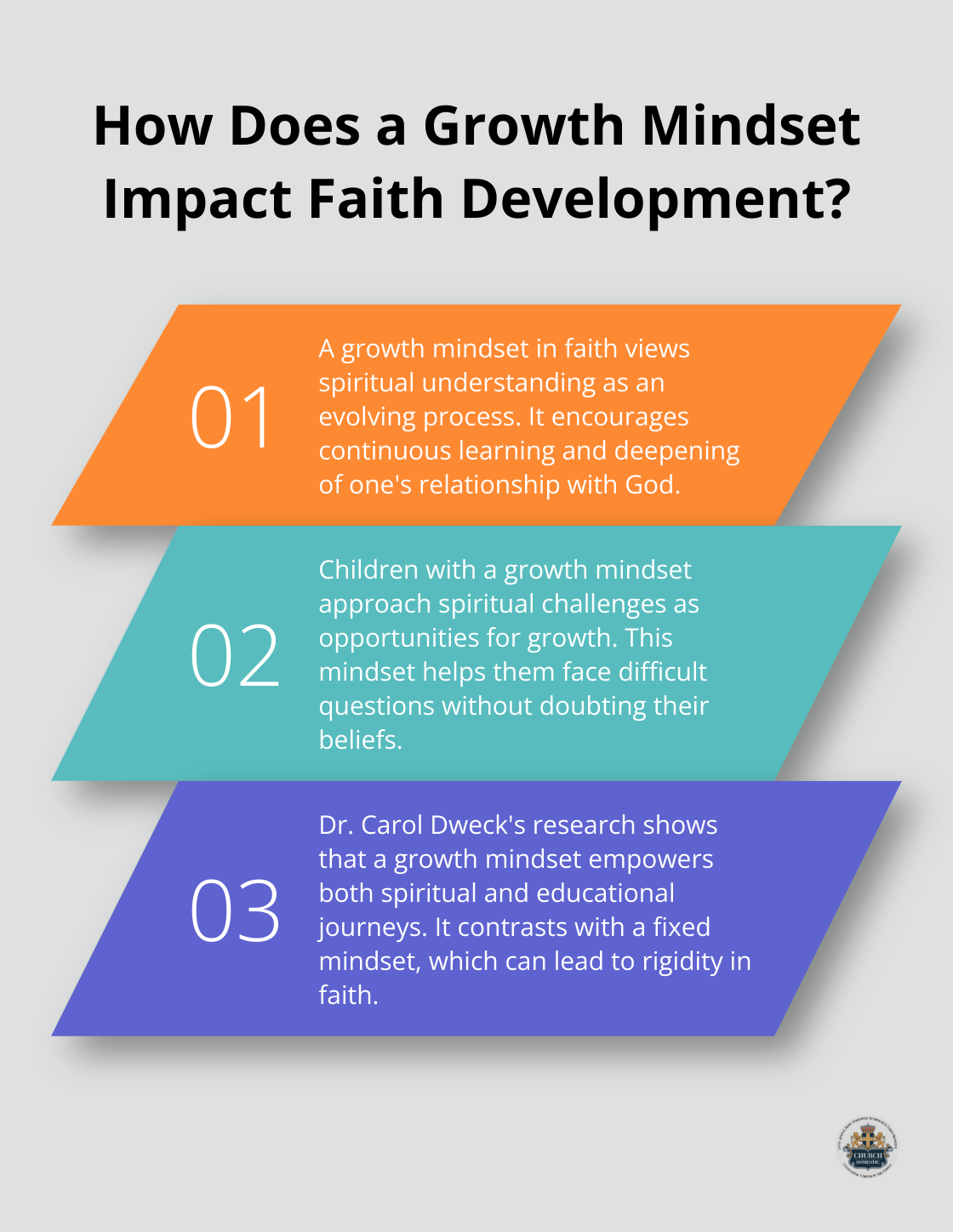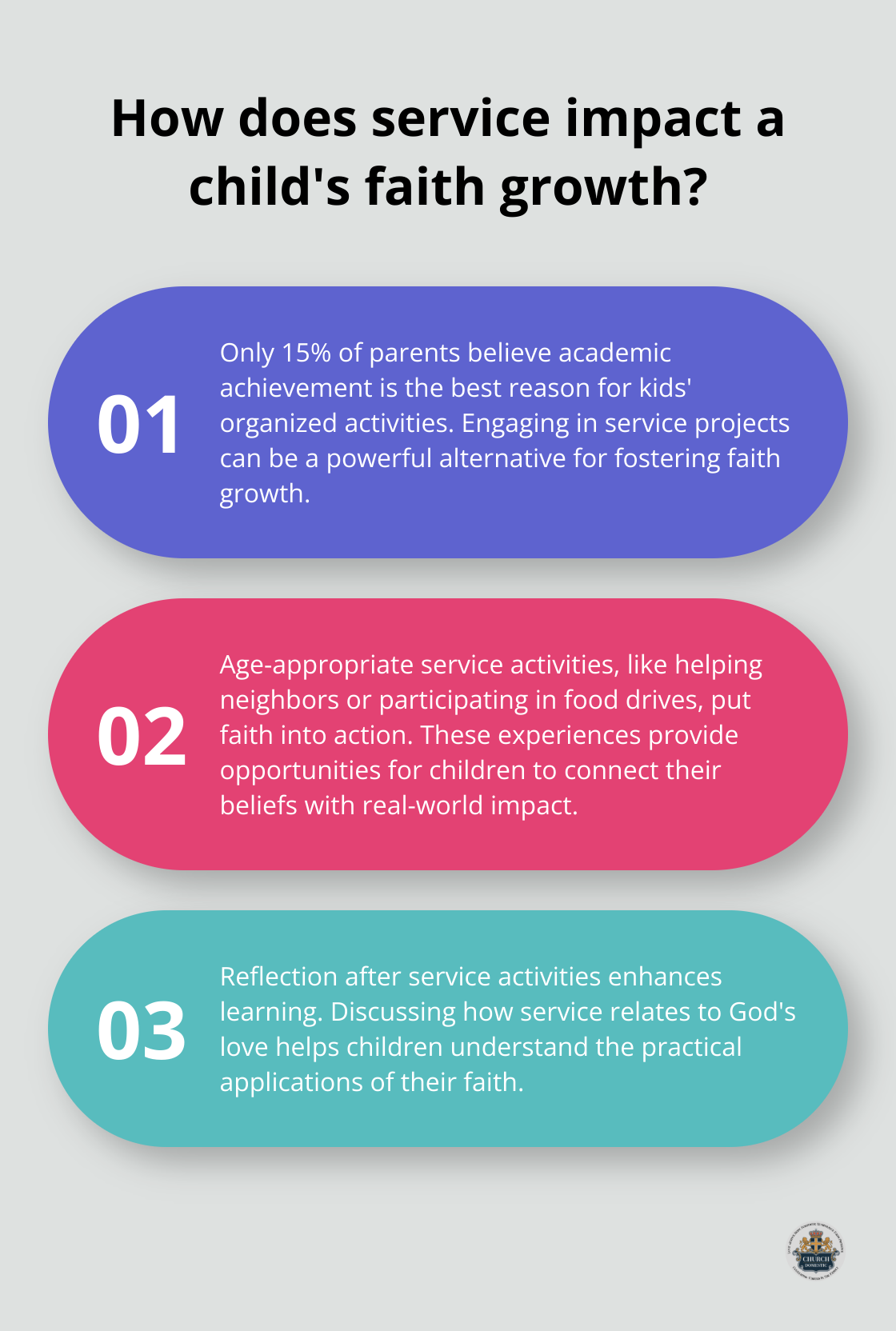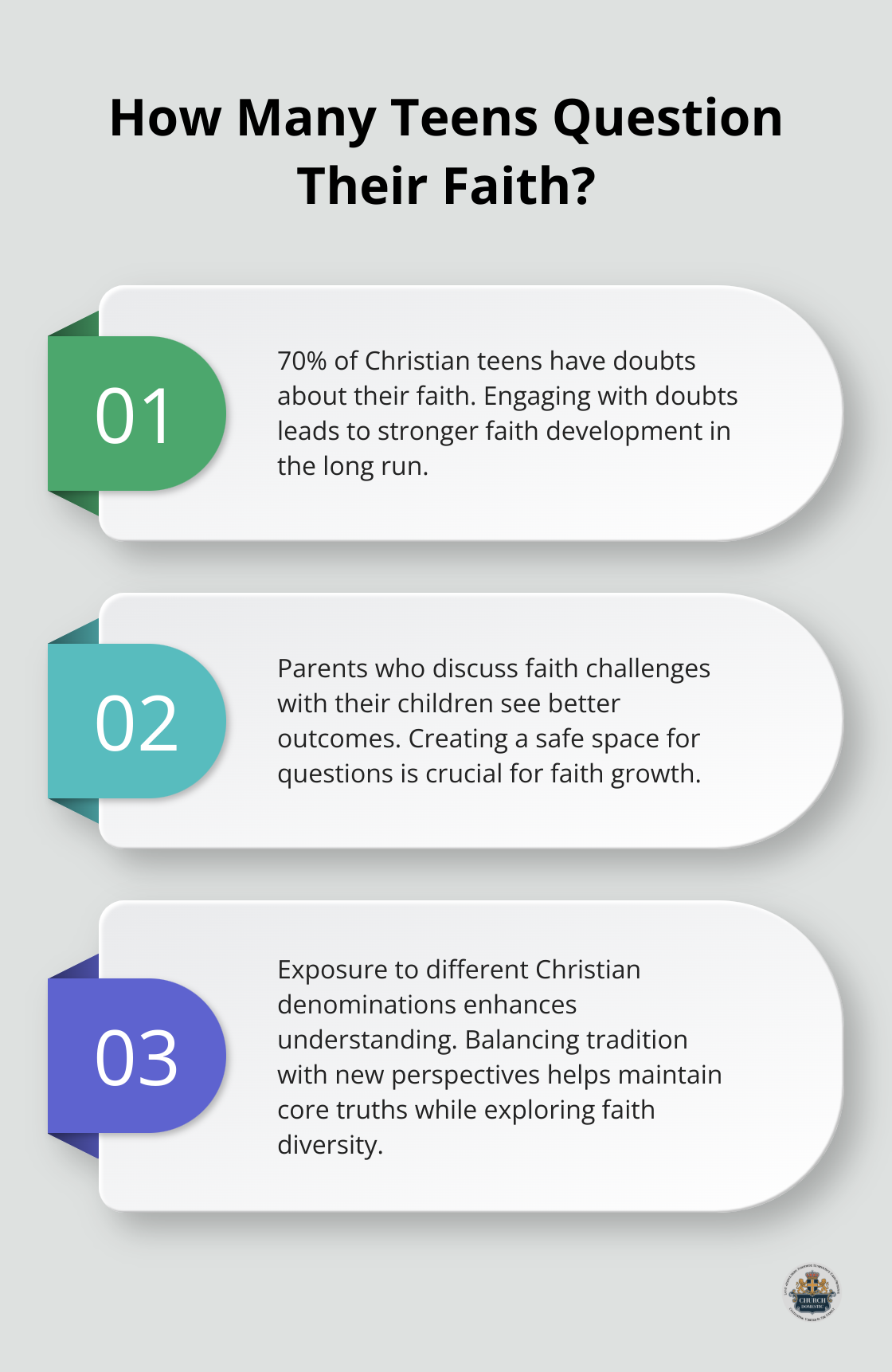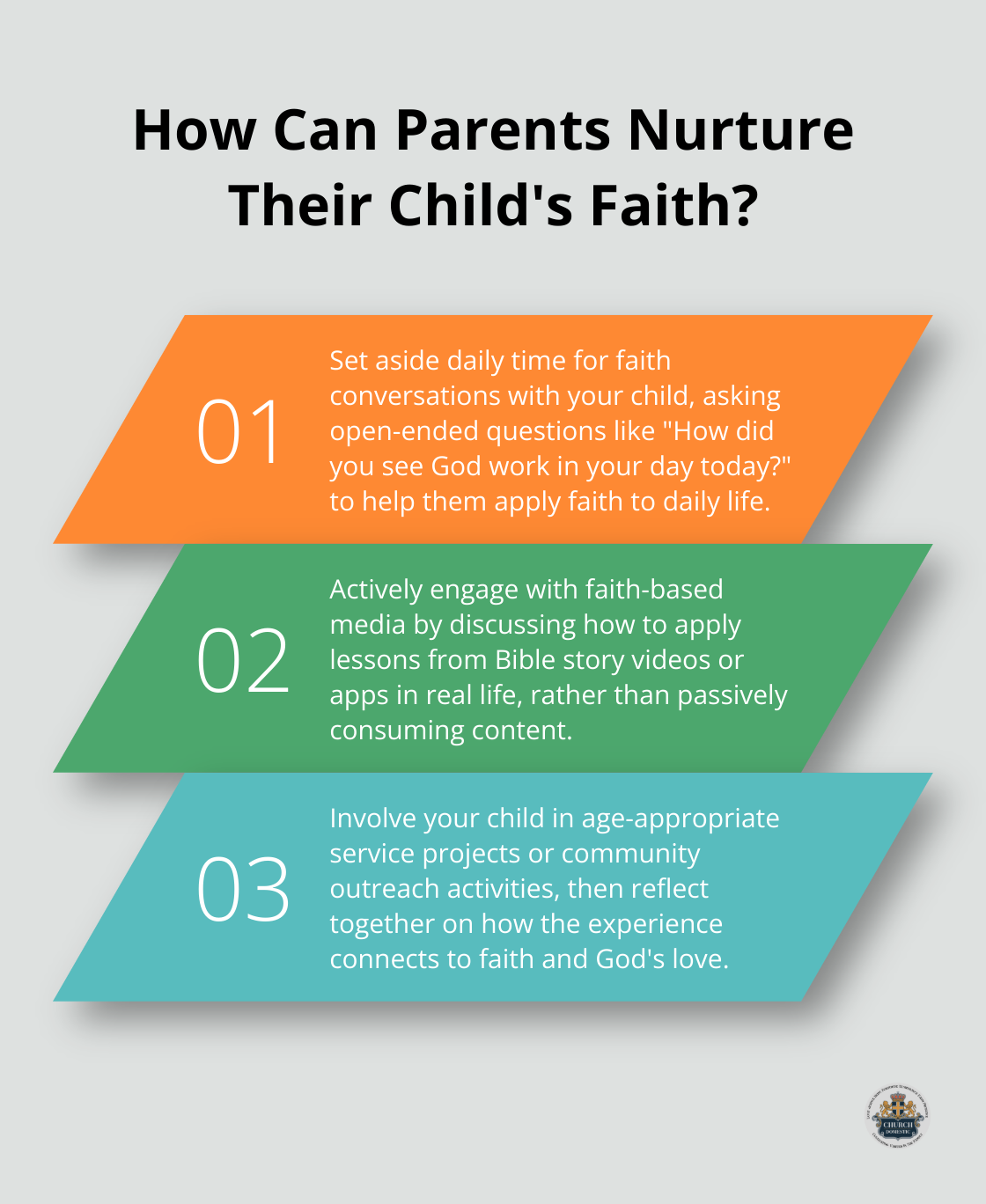At Church Domestic, we believe that nurturing a growth mindset in your child’s faith is essential for their spiritual growth. A growth mindset allows children to embrace challenges, learn from setbacks, and continuously develop their relationship with God.
This approach can transform how children view their faith journey, making it a dynamic and evolving experience rather than a fixed set of beliefs. In this post, we’ll explore practical ways to foster a growth mindset in your child’s spiritual development and overcome common challenges along the way.
What Is a Growth Mindset in Faith?
Understanding the Concept
A growth mindset in faith represents the belief that our spiritual understanding and relationship with God can develop and deepen over time. It views our faith journey as a continuous process of learning and evolving, rather than a fixed set of beliefs we must rigidly adhere to.
The Power of Embracing Challenges
When we foster a growth mindset in our children’s faith, we equip them with tools to face spiritual challenges head-on. Instead of avoiding difficult questions or doubting their beliefs when faced with adversity, children with a growth mindset in faith see these moments as opportunities for spiritual growth.

For example, when a child asks a tough question about God’s existence, parents with a growth mindset approach might say, “That’s a great question! Let’s explore it together and see what we can learn.” This response encourages curiosity and shows that it’s okay not to have all the answers immediately.
Fixed vs. Growth Mindset in Faith
A fixed mindset in faith often leads to rigidity and fear of questioning. Children might think, “I don’t understand this part of the Bible, so I must be a bad Christian.” In contrast, a growth mindset encourages thoughts like, “I don’t understand this yet, but with study and prayer, I can gain deeper insights.”
Dr. Carol Dweck’s research on mindset shows that a growth mindset for learning can empower your child’s spiritual and educational journey when combined with Christian values.
Practical Steps for Parents
- Encourage questions: Create an open environment where your child feels safe asking any question about faith without fear of judgment.
- Share your own journey: Be honest about your own struggles and growth in faith. This vulnerability shows your child that faith is a lifelong journey of discovery.
- Celebrate effort in spiritual practices: Instead of praising perfect attendance at church, acknowledge the effort your child puts into understanding a Bible story or praying regularly.
- Use growth-oriented language: Replace phrases like “You’re so good at memorizing Bible verses” with “I love how you work hard to understand God’s word.”
- Explore different perspectives: Introduce your child to various interpretations of faith within your belief system. This shows that there’s room for growth and different understandings.
A growth mindset in faith equips our children with a resilient and adaptable approach to life’s big questions. This mindset will serve them well as they navigate their own unique faith journey. In the next section, we’ll explore practical ways to encourage this mindset in your child’s spiritual development.
How to Nurture a Growth Mindset in Your Child’s Faith
Make Faith Conversations a Daily Habit
One of the most effective ways to encourage a growth mindset in faith is to make spiritual discussions a regular part of your family routine. Set aside time each day (perhaps during meals or before bedtime) to talk about faith-related topics. Ask open-ended questions like, “What do you think God teaches us through this situation?” or “How did you see God work in your day today?” These conversations help children understand that faith applies to their daily lives and that it’s okay to explore and question.
Use Faith-Based Media Wisely
In today’s digital age, numerous faith-based apps, podcasts, and videos exist for children. However, it’s important to use these resources wisely. Instead of passive consumption, engage with the content actively. For example, after watching a Bible story video, discuss with your child how they might apply the lesson in their own life. This approach helps children see faith as something to live out, not just learn about.
Encourage Service and Outreach
Only 15% of parents in a national survey felt that academic achievement is the best reason for kids to be involved in organized activities. Putting faith into action is a powerful way to foster a growth mindset. Involve your child in age-appropriate service projects or community outreach activities. This could be as simple as helping an elderly neighbor or participating in a food drive at your local church. After each activity, reflect together on how serving others connects to your faith. Ask questions like, “How do you think this act of service made God feel?” or “What did you learn about God’s love through this experience?”
Create a Faith-Friendly Environment at Home
Transform your home into a space that encourages spiritual growth. Display Bible verses or inspirational quotes in visible areas (such as the refrigerator or bathroom mirror). Keep age-appropriate religious books easily accessible. Create a dedicated prayer corner where family members can spend quiet time in reflection. These visual reminders and spaces can prompt conversations and personal reflections on faith throughout the day.
Embrace Doubts and Questions
A growth mindset in faith welcomes doubts and questions as opportunities for deeper understanding. When your child expresses uncertainty or confusion about a religious concept, respond with openness and curiosity. Say something like, “That’s an interesting question! Let’s explore it together.” This approach (which demonstrates that it’s okay not to have all the answers immediately) encourages critical thinking and personal exploration of faith.

As we continue to explore ways to nurture a growth mindset in your child’s faith, it’s important to address the challenges that may arise along this journey. In the next section, we’ll discuss common obstacles and provide strategies to overcome them, ensuring that your family’s faith journey remains dynamic and resilient.
Navigating Faith Challenges with Your Child
Embracing Doubts as Opportunities
When your child expresses doubts about their faith, you might feel concerned. However, these moments present golden opportunities for growth. Instead of dismissing their questions, engage with them. For example, if your child asks why God allows suffering, you could say, “That’s a tough question many people struggle with. Let’s examine what the Bible says and consult our pastor about it.”
Dr. Kara Powell from the Fuller Youth Institute discovered that parents who engage with their children’s doubts (rather than shutting them down) often witness stronger faith development in the long run. Create a safe space for your child to voice their uncertainties without fear of judgment.
Turning Setbacks into Stepping Stones
Disappointments in faith can challenge children significantly. Perhaps your child prayed for something that didn’t happen, or they struggle to see God’s presence in a difficult situation. These moments prove crucial for developing resilience in faith.

Share your own experiences of disappointment and how they ultimately strengthened your faith. You might say, “I once prayed for a job and didn’t get it. I felt let down, but later I realized God had a different plan that turned out even better.”
Encourage your child to journal about their feelings during tough times and to review these entries later. This practice can help them identify patterns of growth and God’s faithfulness over time.
Balancing Tradition and New Perspectives
In today’s rapidly changing world, balancing traditional faith practices with new interpretations can prove tricky. The key lies in rooting your family in core beliefs while remaining open to fresh insights.
Introduce your child to different Christian denominations or invite friends from various faith backgrounds for dinner discussions. This exposure helps children understand that faith can manifest in multiple ways while maintaining core truths.
Dr. Christian Smith’s research at the University of Notre Dame indicates that there is a relationship between adolescent religiosity and parental religiosity in families with intact marriages.
Addressing Peer Pressure and Conflicting Beliefs
As children grow, they inevitably encounter peers with different beliefs or no religious background at all. This situation can lead to confusion or pressure to conform. Try to:
- Encourage open discussions about what friends believe and why.
- Reinforce your family’s values while teaching respect for others’ beliefs.
- Role-play scenarios where your child might face pressure to compromise their faith.
Cultivating Resilience in Faith
Building resilience in faith involves more than just overcoming challenges. It requires actively strengthening one’s spiritual foundation. Consider these strategies:
- Establish regular family devotional times (using resources from Church Domestic if needed).
- Encourage your child to develop personal spiritual practices (e.g., prayer, Bible reading).
- Involve your family in community service to put faith into action.
- Celebrate spiritual milestones and growth moments as a family.
Final Thoughts
A growth mindset in your child’s faith journey nurtures their spiritual development. This approach equips children with tools to build strong, resilient faith that withstands life’s trials. Children who develop this mindset maintain their beliefs into adulthood, navigate doubts confidently, and find deeper meaning in spiritual practices.

Parents play a vital role in this process. We set the tone for faith in our homes and model a growth mindset in our own spiritual journeys. This shows our children that faith is a lifelong adventure of learning and discovery.
At Church Domestic, we support families in their faith journeys. We offer resources to help you foster spiritual growth in your family’s life. Together, we can raise a generation of children who are strong in faith, curious, resilient, and open to spiritual growth.